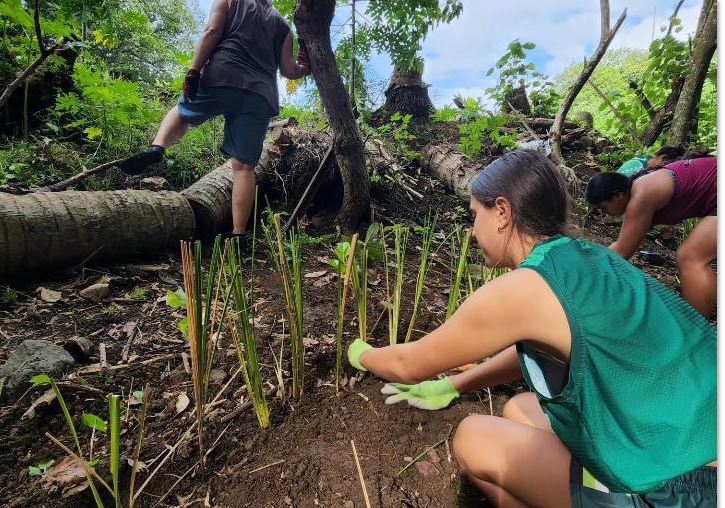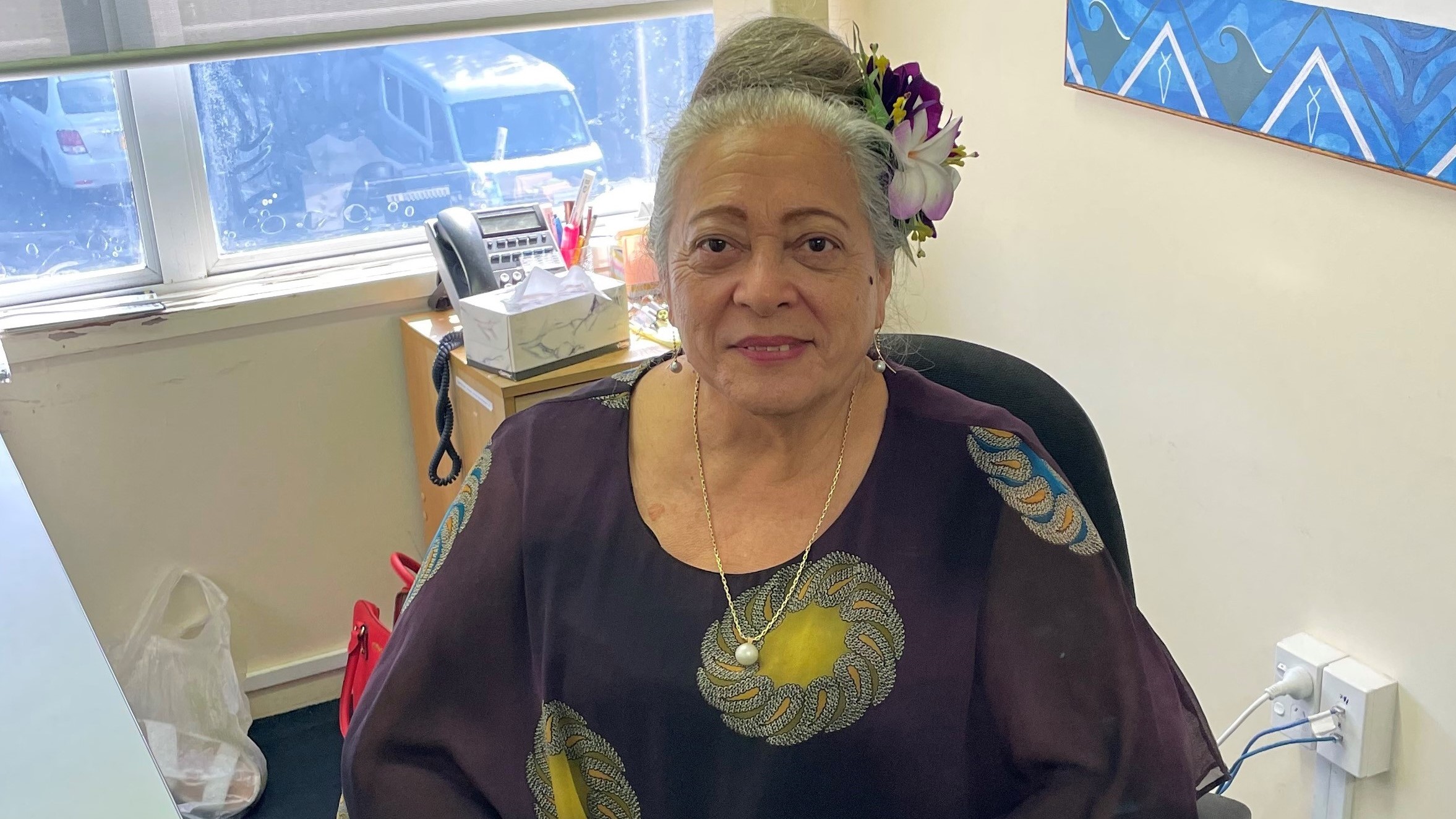Te Ipukarea Society : Nurture nature for our future
Saturday 22 April 2023 | Written by Te Ipukarea Society | Published in Environment, National

Planting Mauku A'i and KāKā plants to help restore Parengaru stream. TIS/23042180
Today is the last day of Earth week for 2023, celebrated from April 14th to the 22nd. It is a week set aside for communities to demonstrate their support for a healthy environment, and remind people that we all need to contribute to a sustainable planet.
Te Ipukarea Society was very happy to help out with an awesome initiative led by Muri Environment Care (MEC) group in the lead up to Earth Week. This was contributing to the community led streams restoration project that took place along the back road Parengaru. Around 40 plus Tereora College students including keen supervisors took part in the stream restoration project as part of their giving back to community exercise to end off Term 1.
Streams are considered our natural freshwater highways, transporting rain from land to sea. They play an important role in reducing floods, and the associated vegetation helps remove pollutants from the water before they make their way to our lagoon.
Brennan Panzarella from Muri Environment Care group who facilitated the event, explained about the importance of significant plants and the specific roles they play in stream rehabilitation.
By planting a diverse range of species, a complex root architecture is developed that prevents erosion, intercepts and transforms excess nutrients and pollutants from flowing downstream, and offers year-round habitat for native species. The stream restoration project provided an assortment of plants including natives that are well adapted to the island’s distinct climate and geology, making them a harmonious fit. One noteworthy example of a native tree that was planted on Friday is the 'Ano (Guettarda speciosa), a coastal hardy native tree admired for its beautiful foliage and fragrant flowers. By cultivating a diverse range of native plant species, we not only enrich the ecosystems they inhabit but also create a supportive environment for native animals, fostering a thriving and interconnected web of life.
The MEC nursery is also growing vaka plants (those that arrived with the first Polynesians) that hold a rich history of traditional uses and cultural significance, showcasing the wisdom and ingenuity of Cook Islands ancestors. One example is Koka (Bischofia javanica), that has a robust root system and a bright-red trunk seen commonly along streams in the forest. Not only does the Koka have a rich cultural history as a dye and as medicine but they also are prolific producers of berries that are a favourite of the endemic Kūkupa bird.
To make the commitment to making healthier streams more appealing for landowners, fruit trees are being planted in more accessible areas of the planting sites. The goal is to provide easy access to nature’s pharmacy through an abundance of health-enhancing fruits and herbs. Fruit trees and herbs such as remuna/pomegranate, lemongrass, moringa, lime, and venevene/surinam cherry were planted on Friday. Fruit trees foster healthy eating habits, enhance ecosystems and provide fresh, nutritious fruits while also providing food and shelter for various species, such as the Kūkupa, the Rupe and the Moakirikiri. Many of the ‘people pleasers’ plants, the common and popular plants with showy flowers, beautiful leaves or distinctive overall forms were also planted. The primary plants that were used for streambank stabilisation in the early stages are plant species dubbed “Ecosystem Engineers”. These may be able to accelerate the return of key ecosystem functions, i.e. erosion resistance and nutrient uptake. Planted in lines on contour and spaced in tightly packed ‘hedges’, vetiver has been a key tool, providing the foundation of the streambank stabilisation. Kākā (Ipomoea pes-caprae) is being trialed as a ‘phytoremediator’ or a plant that is able to intercept and absorb pollutants and either immobilise them or transform them into something less harmful. It is also one of the best native plants available to combat erosion, especially on the coast. Itis an extremely hardy soil and sand-binding creeping vine that does so much to protect our environments, so we should return the favour by nurturing our environments for future generations.
This was an awesome opportunity for students to learn about the native flora and fauna and great to see our young Cook Islanders eager to learn and help out. High motivation and dedication led them to work tirelessly for three and a half hours straight. MEC was grateful for their contributions and hopefully they gained valuable new insights through the experience.



















































